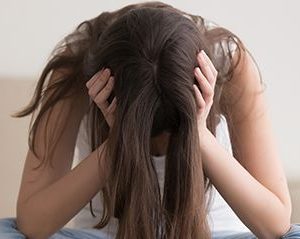- Skip Storing This Everyday Product in the Fridge Door
- Green Tea + B3 Pairing May Boost Brain Health
- Navigating Your Midlife Crisis: Embracing New Possibilities
- City Raccoons Showing Signs of Domestication
- Mapping the Exposome: Science Broadens Focus to Environmental Disease Triggers
- One Week Less on Social Media Linked to Better Mental Health
- Your Brain Changes in Stages as You Age, Study Finds
- Some Suicide Victims Show No Typical Warning Signs, Study Finds
- ByHeart Formula Faces Lawsuits After Babies Sickened With Botulism
- Switch to Vegan Diet Could Cut Your Greenhouse Gas Emissions in Half
Many Who Attempt Suicide Not Getting the Care They Need

About 4 in 10 Americans who attempt suicide don’t get mental health care, claims a new study that also found a “substantial and alarming increase” in suicide attempts.
Researchers analyzed 2008-2019 federal government survey data on self-reported suicide attempts in the last 12 months. They found that the incidence increased from 481 to 564 for every 100,000 adults. The data included people who lack insurance and have little involvement with the health care system.
Women, young adults ages 18-25, unmarried people, people with less education, and those who regularly use substances like alcohol or marijuana showed the largest increases in suicide attempts over the 11-year period.
The only significant decrease in suicide attempts was among adults ages 50-64, according to the study published Jan. 19 in JAMA Psychiatry.
During the study period, the rate of people who attempted suicide in the previous year and said they weren’t receiving mental health services remained steady at about 40%, said Greg Rhee, an assistant professor of psychiatry at the Yale School of Medicine and one of the authors of the study.
Cost, uncertainty about where to find treatment and a lack of transportation were among the reasons cited by survey respondents for not seeking mental health care.
The Affordable Care Act has required all health plans to cover mental health and substance abuse services, and also cut number of uninsured Americans. In 2008, 43.8 million Americans, or 14.7 percent of the population, were uninsured, according to the Centers for Disease Control and Prevention. By 2020, that total had dropped to 28 million, or 8.6 percent of the population, the Census Bureau reported.
But many of those surveyed in the new report said the cost of mental health care was still prohibitive; others said they were uncertain where to go for treatment or had no transportation.
“It is a huge public health problem,” Rhee told The New York Times. “We know that mental health care in the U.S. is really fragmented and complicated, and we also know not everybody has equal access to mental health care. So, it’s somewhat not surprising.”
With an annual death toll that has risen 60 percent in recent decades, suicide is one of the top 10 leading causes of death in the United States. Between 1999 and 2018, the rate of suicide in the population increased by 35 percent, dipping for the first time, by 2 percent, in 2019, CDC data shows.
More information
Visit the U.S. National Institute of Mental Health for more on suicide.
Source: HealthDay
Copyright © 2025 HealthDay. All rights reserved.










